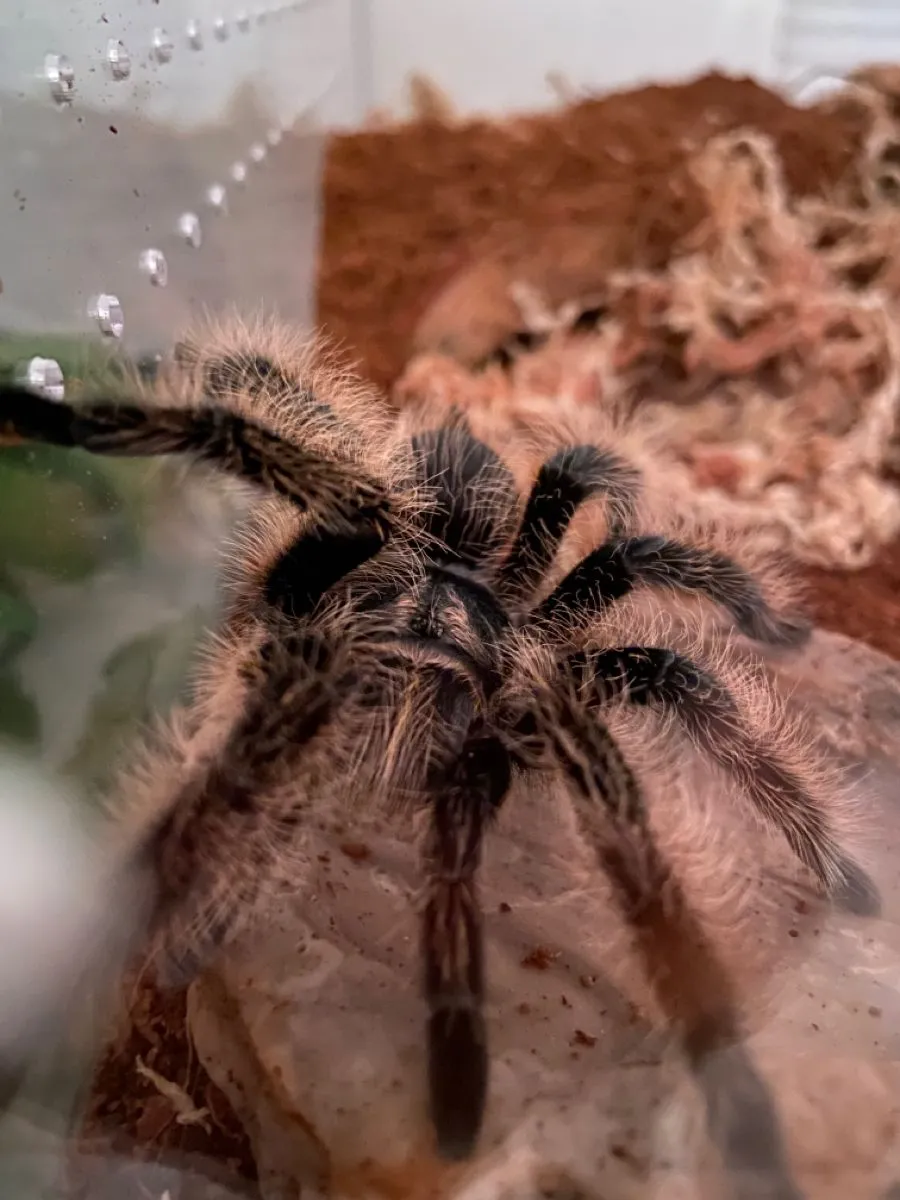What Does It Mean When a Tarantula is Curled Up?
Observing a tarantula curled up in the corner can be a moment of concern for any tarantula owner. This posture, often described as a tight ball or fetal position, is a significant indicator of the tarantula’s current state. It’s crucial to understand what this behavior signifies to provide the appropriate care and ensure your pet’s well-being. A curled-up tarantula can be a sign of various underlying issues, ranging from natural processes like molting to environmental stressors or even serious health problems. Recognizing the potential causes and knowing how to react is essential for responsible tarantula ownership. This article delves into the different reasons behind this behavior, providing you with the knowledge to assess your tarantula’s condition and take the necessary steps to help them.
Understanding the Defensive Posture
The curled-up position often represents a defensive posture. When a tarantula feels threatened or stressed, it may curl up to protect its vulnerable underside. This position makes it harder for predators to access its soft abdomen and vital organs. The tarantula may also raise its fangs and expose its spinnerets as a further defense mechanism. Understanding this defensive behavior is key to interpreting your tarantula’s actions. It means the tarantula feels unsafe. This could be due to a variety of reasons, from a perceived threat in its environment to discomfort caused by temperature or humidity issues. Careful observation and understanding the context in which the curling occurs will help you determine the most likely cause.
The Fetal Position
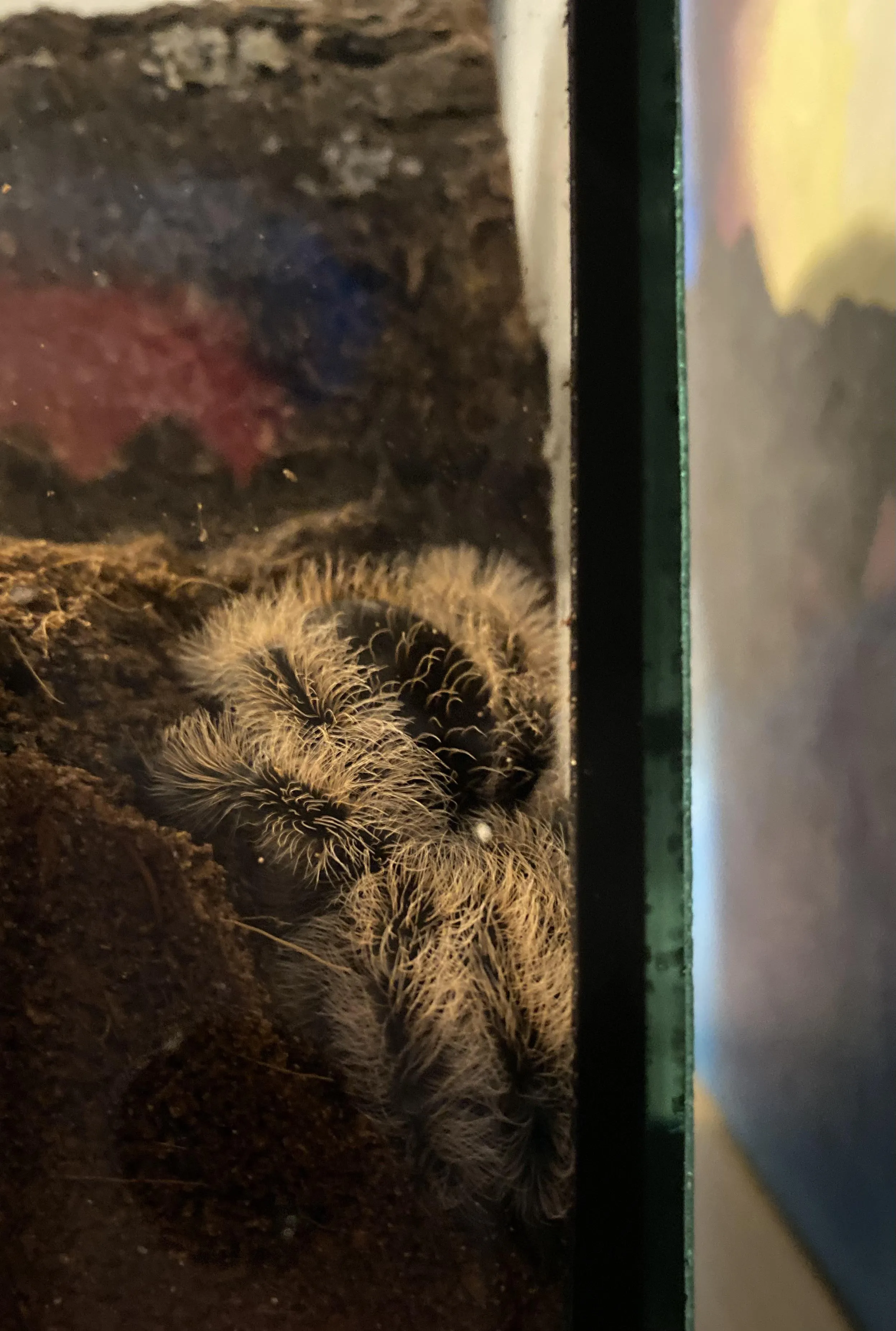
The fetal position, where the tarantula draws its legs close to its body, is a common sight when they are curled up. This position, similar to a human fetus, is a natural response to perceived danger. By bringing all its limbs in, the tarantula minimizes its exposed surface area, making it a smaller and less accessible target for potential threats. This posture also allows the tarantula to shield its vital organs, such as its heart and book lungs, which are located on its underside. When you see your tarantula in this position, it’s a signal that something in its environment is causing it stress or making it feel vulnerable, and it needs your attention to identify and rectify the issue.
Why Do Tarantulas Curl Up?
Several factors can cause a tarantula to curl up. Knowing these reasons helps you diagnose and address the problem promptly. Often, the cause is linked to environmental factors, the molting process, or stress. It’s important to consider all possibilities before jumping to conclusions. Each factor requires a different approach, emphasizing the importance of careful observation and understanding your tarantula’s specific needs. By investigating these factors, you can create a comfortable and safe environment for your tarantula, reducing the likelihood of it curling up and improving its overall well-being. Proper care involves a keen understanding of your pet’s needs and a willingness to adapt to their specific requirements.
Temperature and Humidity
Incorrect temperature and humidity levels are common culprits. Tarantulas thrive in specific conditions; deviations from these can cause stress. Too much heat or cold can lead to discomfort, prompting the tarantula to curl up. Likewise, if the humidity levels are too low or too high, it can affect their health. Dehydration is a major risk in low humidity environments, making them curl up to conserve moisture. The correct temperature range for most species is between 75-85°F (24-29°C), with humidity levels varying based on the species. Regularly monitor these conditions with a reliable thermometer and hygrometer. Ensure the enclosure has proper ventilation to prevent issues. Adjusting the environment to match your tarantula’s needs is crucial for their health and behavior.
Molting Process
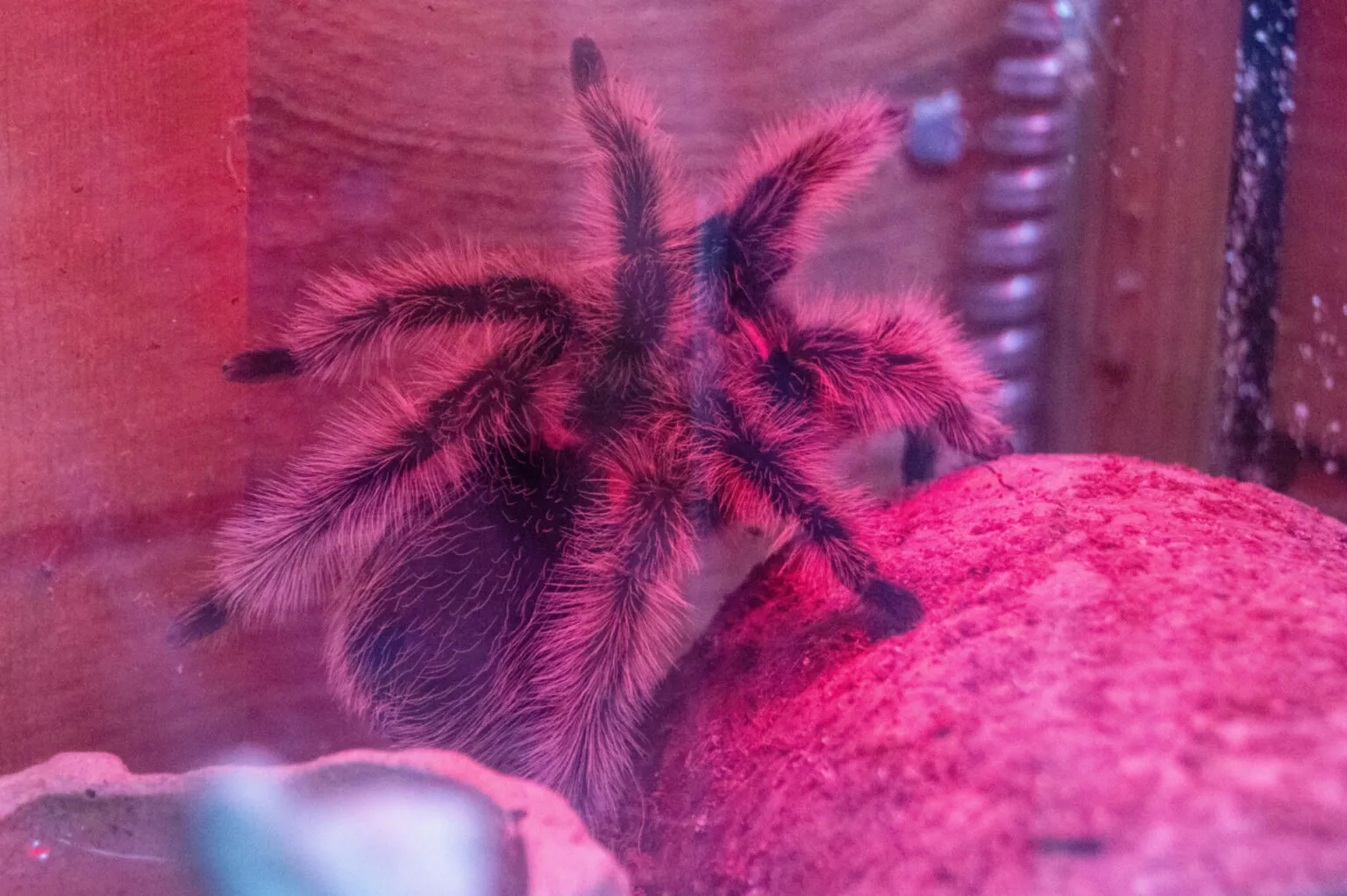
Molting is a natural process where tarantulas shed their exoskeleton to grow. Before molting, a tarantula may become lethargic and curl up. This behavior is a normal part of the molting process. The spider is preparing to shed its old exoskeleton and will often spend several days in this curled position. During this time, the tarantula is vulnerable and avoids movement to conserve energy. Do not disturb the tarantula during molting. Ensure the enclosure is calm and free from disturbances. Avoid feeding your tarantula during this period, as it will not eat. Once the molt is complete, the tarantula will shed its old skin and emerge with a fresh, new exoskeleton. The time to molt varies depending on the spider’s age and species.
Stress and Environmental Factors
Stress and environmental factors significantly impact tarantula behavior. Loud noises, vibrations, or sudden movements near the enclosure can stress a tarantula, causing it to curl up as a defensive response. Other factors include a poorly designed enclosure with insufficient hiding places, improper substrate, or the presence of irritating chemicals. Sometimes, the mere presence of other pets or even reflections from glass can cause stress. Providing a calm, quiet environment is essential. Ensure the enclosure is spacious with adequate hiding spots and a suitable substrate. Avoid placing the enclosure in high-traffic areas or near sources of loud noise. Regularly assess your tarantula’s environment to identify potential stressors and implement changes to reduce anxiety and improve their well-being.
How to Help a Curled Up Tarantula
If you notice your tarantula curled up, prompt action is essential. The first step is to assess the situation, considering the potential causes outlined above. Provide immediate relief by adjusting environmental factors and providing a safe space. The approach depends on the specific issue. Knowing how to respond properly can greatly improve the chances of a positive outcome. Remember, patience and observation are key. Avoid sudden movements or loud noises, as these can further stress the tarantula. If the curling persists, or if other concerning symptoms appear, seek professional advice from an experienced arachnid veterinarian or specialist. The goal is to create a comfortable environment and address any underlying health concerns.
Provide a Safe Environment
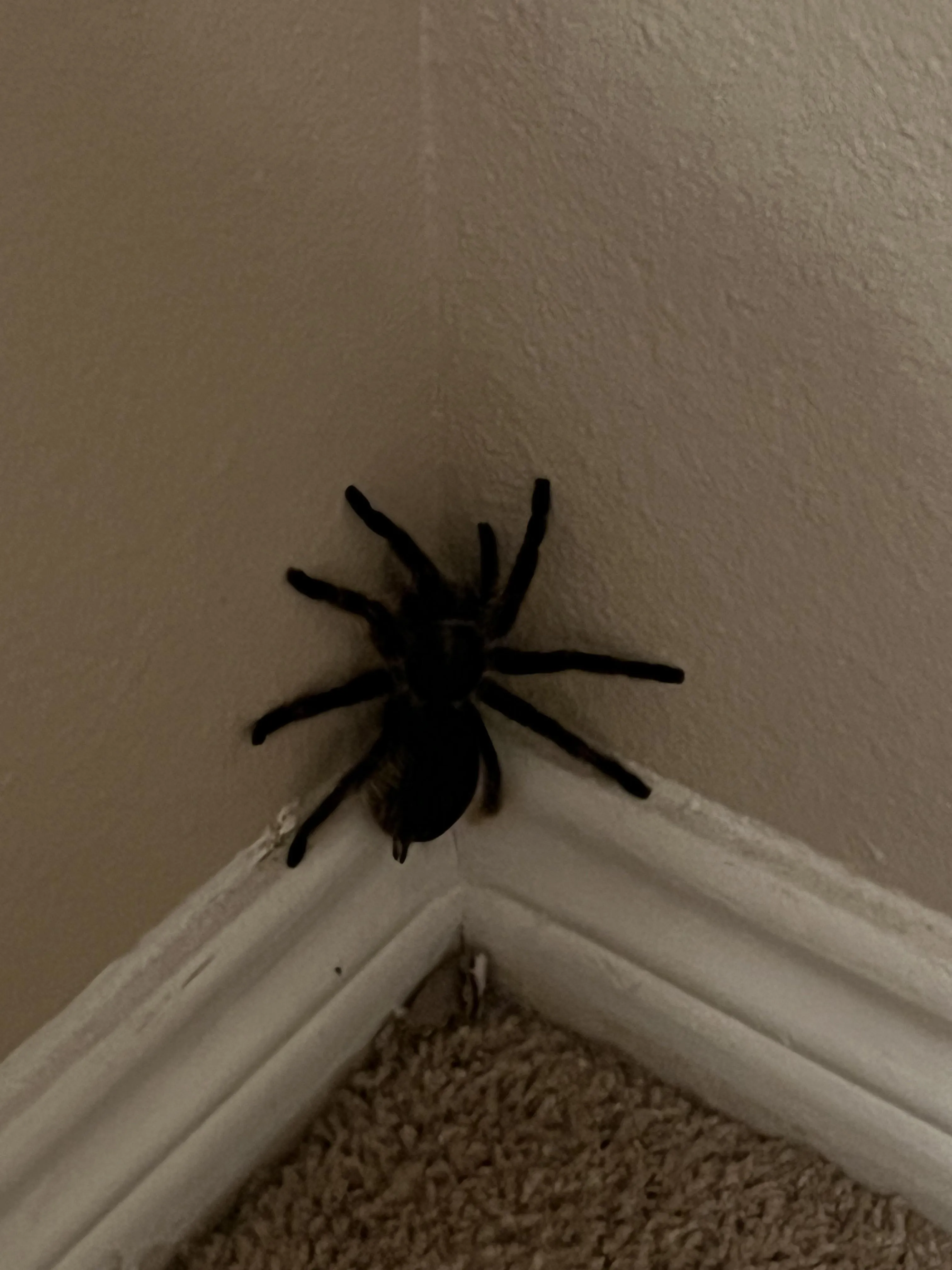
Creating a safe environment is the first step. Ensure the enclosure is secure and free from potential hazards. Provide a spacious enclosure with adequate hiding places, such as a cork bark or a hide. This will give your tarantula a secure retreat, reducing stress levels. Avoid overcrowding the enclosure, as this can lead to territorial disputes and increase stress. Ensure the substrate is appropriate for the species. Handle your tarantula with care and minimize disturbances around the enclosure. A well-designed and maintained enclosure will help your tarantula feel safe and secure, decreasing the likelihood of stress-related behaviors such as curling up. Regularly inspect the enclosure to ensure everything is in order.
Check Temperature and Humidity
Monitoring temperature and humidity is crucial. Use a reliable thermometer and hygrometer to ensure that the environment meets the specific needs of your tarantula species. Adjust the temperature and humidity levels as needed. If the enclosure is too cold, use a heat source, such as a heat mat or a ceramic heat emitter, to warm the environment. Make sure the heat source is placed outside the enclosure to prevent burns. Increase humidity by misting the enclosure with dechlorinated water or by providing a water dish. Ensure proper ventilation to prevent mold growth. Regularly check the temperature and humidity levels, making adjustments as necessary to create a comfortable and healthy environment for your tarantula. A proper environment can prevent many issues.
Monitor Water and Food Intake
Keeping an eye on your tarantula’s water and food intake can help assess its health and well-being. Ensure a constant supply of fresh, clean water is available, usually in a shallow water dish. If the tarantula is dehydrated, it may curl up. Offer appropriate food, such as crickets or roaches, based on the tarantula’s size and species. A tarantula that is not eating may be experiencing stress or illness. If the tarantula is curled up, it may not eat, so it’s crucial to address the underlying cause. Observe the tarantula’s eating habits closely. Note any changes, such as a decrease in appetite or refusal to eat. Adjust the feeding schedule or the type of food offered if needed. Regularly monitoring the water and food intake can provide insights into the tarantula’s overall health.
When to Seek Professional Help
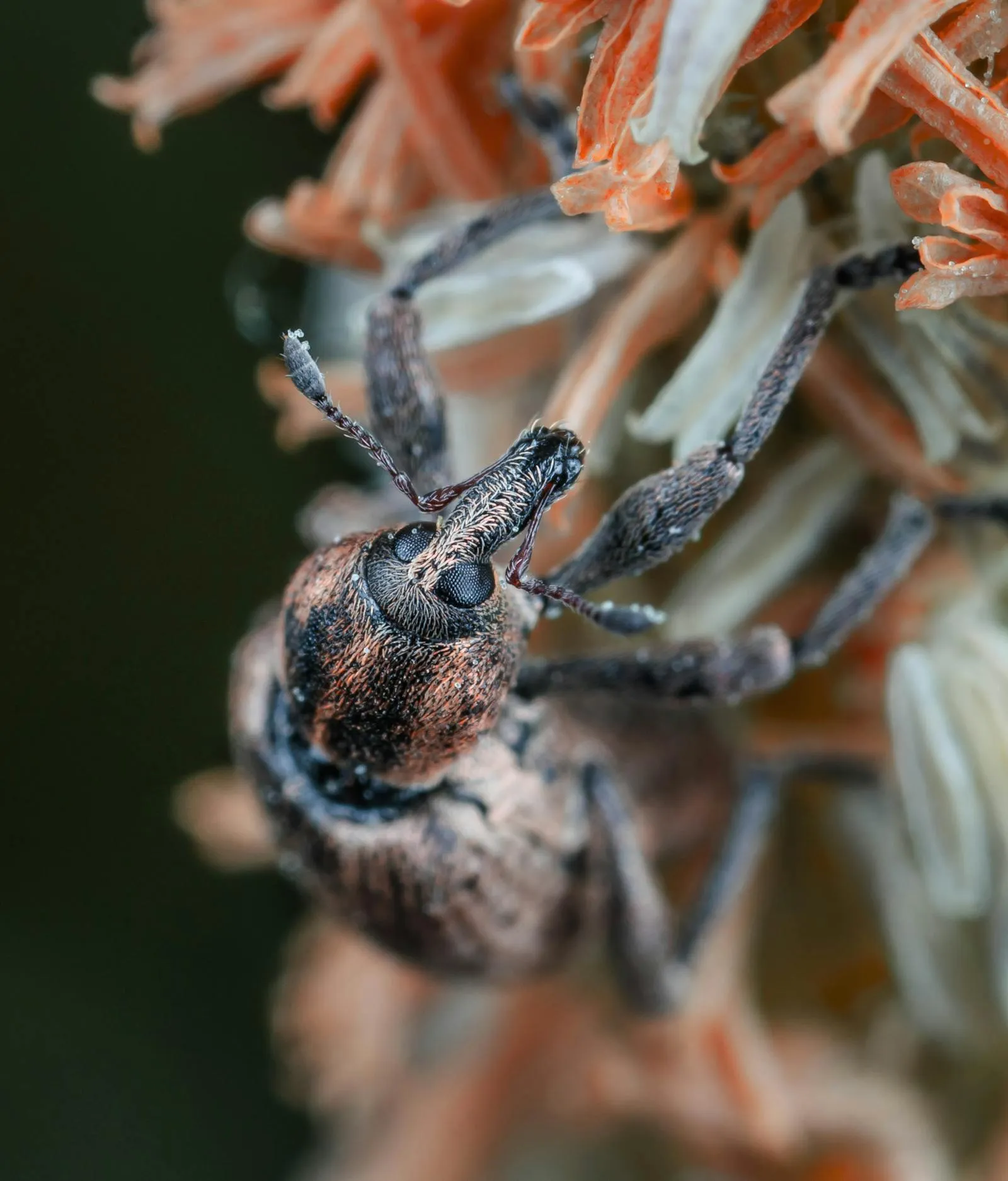
Knowing when to seek professional help is crucial for ensuring your tarantula’s well-being. While some instances of curling up might be due to temporary stress or molting, persistent curling, or the appearance of other symptoms warrants a visit to an expert. Early intervention can significantly improve the chances of a positive outcome. It is important to be vigilant, and if you notice changes in your tarantula’s behavior or appearance, it’s best to consult an expert. A specialist can accurately diagnose the issue and recommend the best course of action. Your proactive approach can make all the difference in your tarantula’s life.
Signs of Serious Issues
Several signs indicate the need for professional help. If the curling persists for an extended period, or if it’s accompanied by other symptoms, such as loss of appetite, lethargy, or abnormal movements, seek expert advice. Check for other symptoms, such as discoloration, wounds, or unusual discharge. Difficulties in molting or failure to molt are serious concerns. If you observe any of these signs, contact a veterinarian specializing in exotic animals or a tarantula specialist immediately. A professional can properly assess the situation and provide the necessary treatment. Time is of the essence when addressing these issues, as early intervention often leads to a better outcome. Be prepared to provide information about your tarantula’s environment, care, and history to help the specialist make an accurate diagnosis.
Finding an Expert
Finding a qualified expert is a critical step. Start by searching for veterinarians or specialists who have experience with exotic animals, particularly arachnids. Check online resources, such as veterinary directories or exotic pet forums, to find specialists in your area. Consult local pet stores and ask for recommendations for experienced professionals. Once you identify potential experts, research their credentials and experience. Read reviews and testimonials from other tarantula owners. When you contact a specialist, ask about their experience with tarantulas and what services they offer. Choose a specialist that you feel comfortable with and who can provide the best care for your pet. Having a trusted expert on hand will give you peace of mind and ensure that your tarantula receives the best possible care.
In conclusion, the curled-up posture in a tarantula is a significant signal, often indicating stress, a need to molt, or environmental issues. Knowing the reasons for this behavior and how to address them ensures responsible tarantula ownership. Regularly monitor your tarantula’s environment, and seek professional help when necessary. By doing so, you can ensure the health and happiness of your pet, providing a fulfilling experience for both you and your tarantula.
